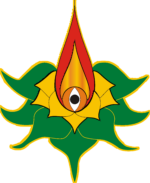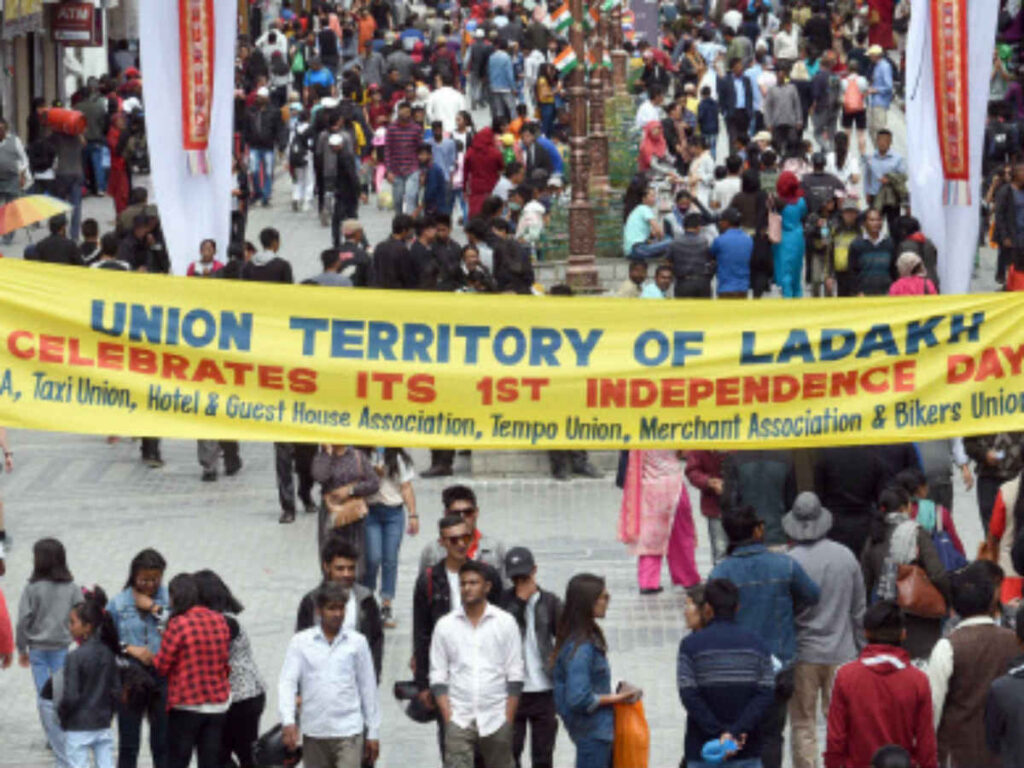Cold-desert Ladakh is a highly strategic region. It’s vital to the security of the nation. It was the biggest region of the erstwhile J&K State. The second biggest province was Jammu. Kashmir was just a tiny part of the state, which came into being in March 1846 under the Treaty of Amritsar, signed between Raja of Jammu Gulab Singh and the British Government. Ladakh had become part of the Jammu/Dogra Kingdom in 1834, 12 years before the formation of J&K State. The Dogra forces under General Zorawar Singh had annexed Ladakh.
Pakistan and China have all along used all imperialist means to occupy Ladakh and other strategically important areas of J&K. They have been successful. Pakistan captured 84,100 sq km area in 1947-48 — 1,680 sq km area was part of Jammu province and the remaining area was part of Ladakh. Courtesy: JL Nehru. It’s no secret. These illegally-occupied areas should have been called Pakistan-occupied-Jammu and Ladakh (PoJL), but it was not to be. It’s an irony that almost all those who matter term it Pakistan-occupied-Kashmir (PoK), despite the fact that not one person in this area is ethnically Kashmiri or not one person speaks Kashmiri language. Again, courtesy: JL Nehru. China occupied 43,000 sq km area of Ladakh in 1962 with utmost ease. Again, courtesy: JL Nehru. The whole country, nay the whole world, knows it.
The Ladakh as it exists today occupies only 59,146 sq km area. It consists of two districts – Leh and Kargil. Leh district consists of Leh and Nubra Tehsils – both overwhelmingly Buddhist — and Kargil district consists of overwhelmingly Shia-dominated Kargil tehsil and Buddhist-majority Zanskar tehsil. While Kargil and Zanskar have been pulling in different directions, Leh and Nubra always work in unison. Sheikh Abdullah had created Muslim-majority Kargil district in 1978-79 to create a communal counterpoise to the popular aspirations of the majority Buddhists. That people of Zanskar want separation from Kargil could be seen from their two demands – district status to Zanskar or integration into Leh district.
The relations between the bulk of the Ladakhi population and people of Jammu province have always been exceptionally cordial. Ladakhis always preferred Jammu and Jammu always welcomed them with folded hands. Indeed, Jammu was, and continues to be, the second home of Ladakhi Buddhists. Bulk of them acquired, and continues to acquire, education in the Jammu-based colleges, universities and technical and professional institutions. The story of relations between the people of Ladakh region, barring the handful followers of the Congress and the National Conference (NC) in Kargil, and Kashmir was altogether different. Both disliked each other because their political aspirations were contradictory and mutually exclusive. The assertive and politically conscious Ladakhi Buddhists always opposed any kind of truck between Ladakh and Kashmir. Their battle-cry always was separation from Kashmir or merger with Jammu province or merger with Himachal or a NEFA-type regime or what they called in 1949 “self-rule”. The most significant aspect of the whole political situation in Leh district was that even an overwhelming majority of Muslims and Christians extended unflinching support to the Buddhists. The truth is that the bulk of Ladakhi population consistently opposed the Kashmiri Muslim leadership and what it stood for and continues to fight for.
The first time the Ladakhis demanded self-rule was in 1949, when Chewang Rigzin, president Ladakhi Buddhist Association (LBA) Subject Committee, submitted a memorandum to the then PM JL Nehru . The path charted by Chhewang Rigzin was faithfully treaded by the people of Ladakh, who in 1952 under the inspiration and effective leadership of the Head Lama of Ladakh, Kushak Bakula, not only demanded an effective say in the administration of the state, but also asserted that they would join Tibet in the event of New Delhi agreeing to Sheikh Abdullah’s demand for greater autonomy or limited accession of J&K to India. In September 1967, the Ladakhis launched an organized struggle against “Kashmiri domination.” Their highly revered leader, Kushak Bakula, who served as Minister of Ladakh Affairs between 1953 and 1967, went a step further and charged that “Ladakh has all along been treated as a colony by the State leadership,” but also threatened that “Ladakh will become part of Tibet if his demand for a ‘NEFA-type administration with representation in the Central Cabinet’ was not conceded.” Kushak Bakula told media in Delhi about Ladakhi grievances and asserted that “direct central administration of Ladakh would ensure its speedy economic development, which has been ignored during the past 20 years.” He said: “Whatever little development had taken place in Ladakh was due to the efforts of the Indian Army.”
Similar movements were started by Ladakhis in 1974 and 1982 under the leadership of Lama Lobzang-Thupstan Chhewang and P Namgyal, respectively, demanding Union Territory status for Ladakh. Nothing came out of the efforts of Lama Lobzang and Namgyal. Instead, the Kashmiri leadership backed to the hilt by New Delhi disturbed the socio-political equilibrium in 1978-79 by dividing Ladakh into Leh and Kargil districts on purely religious lines.
Under these circumstances, the LBA launched a struggle on Oct. 15, 1989, for Union Territory status for Ladakh. The movement left three persons dead and several seriously wounded. Crowds, mainly Buddhists, burnt government property and attacked police stations. Law and order could be restored only after October 29, when the representatives of the State and Central Government met the agitating LBA leaders at Leh and reached an agreement under which Leh district was to get an autonomous hill development council, invested with administrative and economic powers. The agreement was signed by Thupstan Chhewang (LBA), P.P. Srivastava (Additional Secretary, Union Ministry of Home Affairs) and Ashok Jaitley (Additional Chief Secretary, Jammu and Kashmir Government), in the presence of Union Home Minister Buta Singh, who assured the Ladakhis of a set up on the lines of the Gorkha Hill Council. However, it was only in September 1995 that a democratically-elected Leh Autonomous Hill Development Council (LAHDC) came into being. Notwithstanding the creation of LAHDC, the Ladakhi Buddhists continued to demand UT status from time to time on the ground that successive Kashmir-led and dominated governments didn’t allow the LAHDC to function in the manner which could cater even to the basic needs of Ladakhis.
Full credit goes to PM Narendra Modi and HM Amit Shah, who on August 5-6, 2019, not only conceded the age-old demand of the Ladakhi, but also scrapped the J&K’s separate status with the full backing of the Parliament. To be more precise, Modi and Shah, on the one hand, rendered divisive Article 370 unreal and ineffective, abrogated the discriminatory Article 35A, scrapped J&K Constitution and withdrew residuary powers, and, on the other, divided the 173-year-old state into two UTs – UT of J&K and UT of Ladakh. That the Modi Government had contemplated big changes as far as the Ladakh’s political future was concerned had become clear when Governor SP Malik ended 71-year-old Kashmir’s control over the Ladakh’s education system by establishing the University of Ladakh and granted divisional status to this region after segregating it from Kashmir division.
What’s the political reaction in Ladakh to what PM Modi and HM Shah did on August 5-6, 2019? The reaction was one of overwhelming satisfaction. Even today, the people of Leh district, the headquarters of the UT, and Zanskar are in a celebration mode. In Leh, almost all the top Congress leaders had quit the Congress and joined the BJP. Even the president of Ladakh Pradesh Congress chief Rigzin Jora has hailed PM Modi. “We are happy that we have been freed from the yoke of selfish rulers who remote controlled us both as people and territory,” he, among other things, said. The story of the NC leaders in Leh district is no different. As for Zanskar, the Congress unit said goodbye to Sonia and Rahul and threw in their lot with the BJP and the Leh leadership. Yes, there were a few voices of dissent in Kargil tehsil but it was a short lived phenomenon. The truth is that all Ladakhis, barring a few disgruntled elements here and there in Kargil, have cheerfully accepted the changes. And why not? After all the immediate fallout of the changes has been the decision to establish Central University Ladakh, medical and engineering colleges, set up a 7,500MW solar park in Ladakh, to mention only a few.
However, to say all this is not to suggest that the Ladakhis are satisfied 100%. They are not. They have demanded that Ladakh should be included in the Sixth Schedule of the Constitution as 95% population of the region is tribal. “Only such constitutional safeguards would achieve the real purpose of our becoming a UT,” top Ladakhi leaders — cutting across party lines — have said. Besides, they have said: “First, we should be given a legislative assembly the soonest possible and, if for some reason the Union Government needs more time to ensure it, the two existing Autonomous Hill Development Councils in Leh and Kargil should be sufficiently empowered to make necessary legislations and rules for areas under their jurisdiction with elected representatives have the final say”. But more than that, they have batted for reservation of all jobs for local youth and demanded full control over land and this is debatable.

